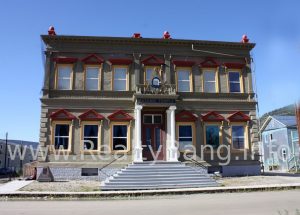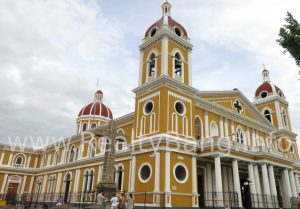Real Estate Investment In Botswana: Botswana’s residential property market, while relatively undeveloped, offers considerable growth potential.
This beautiful country offers spectacular wildlife tourism with an excellent climate throughout the year, and its thriving diamond mining industry gave it the world’s highest average growth rate from 1966 to 1999, making it the highest per capita gross domestic product in the United States Is the highest level of.
The product has the highest level. The product is almost the highest. is more. Also transformed into a middle-income country. $ 8,000 in 2018.
However, imposing a 30% transfer tax on foreign property buyers will reduce demand. But this has not yet stopped the rise in house prices.
The boom in the real estate market
According to the Bank of Botswana’s Monetary Policy Report of October 2019, the average price of residential property in the first quarter of 2019 increased by 11.4% to BWP 852,529 (US $ 78,430) in the same period of the previous year. Prices rose 11.1% in Q1 2019.
Land prices are also rising, although cheaper by international standards. According to the CABF, the average price of freehold land within Gabor’s city center in 2018 was BWP1,320 (the US $ 121) per meter (sq m). This means a small plot of 300 square meters. The city will cost around BWP396,000 (US $ 36,400). The land is still affordable in rural and urban villages, ranging in price from BWP 230 to BWP 260 per square meter.
High rental yields in Gaborone and Francistown 8%
Housing supply shortages in Botswana have led to higher rental yields, suggesting that Gaborone and Frankstown can enjoy yields ranging from 6.5% to 9.5% on residential property. This is supported by recent research conducted by the Center for Affordable Housing Finance (CAHF) in Africa, which suggests that currently, rental properties in the City Center provide a high gross rental yield of 7.9%.
Residential property located outside the city center also provides healthy rental yields of around 5.5%.
According to the World Bank’s Ease of Doing Business 2020, the entire process of property registration in Botswana can take up to 27 days to complete four processes. The property is valued at about 5.1%.
To increase tenure security and improve transparency on land and property ownership, the Ministry of Land and Housing has recently implemented a nationwide land registration system.
New high property transfer fees may scare off foreign buyers
In August 2019, the Transfer Fee Act was amended to encourage homeowners among locals, especially for young families. Some important changes include:
- It exempts citizens from paying transfer fees in certain circumstances, such as when a person uses the residential property as their home for the first time.
- This raises the rebate limit from BWP 200,000 (US $ 18,400) to BWP 1 million (US $ 91,992).
However, the new law only increases the transfer fee for non-citizens from 5% to 30%, which is expected to reduce foreign demand.
Insufficient housing supply
Botswana has a very small supply of ready-built housing units, with most people building their homes. According to the 2017 Demographic Survey Report, about 47.5% of households in the country live in their own homes while 26.5% of the people live in rental or institutional housing. Only 2% of the families live in the purchased house.
According to Statistics Botswana, there were approximately 649,806 housing units in Botswana, half of which were set aside.
Currently, there are more than 685 property developers in the country but only 50 of them are registered with the Registrar of Companies. Most of these private developers only cater to upper-middle and high-income homes, offering two-bedroom, 45-class. MW Homes for BWP 650,000 (US $ 59,800).
Check Falling interest rates in Real Estate Investment In Botswana
The average mortgage rate of 6.13% was unchanged in August 2019 by non-financed financial corporations – below the mortgage rate of between 15% and 17% in 2008. Commercial and merchant banks offered an average rate of 8.28% according to the Bank of Botswana.
Mortgages are available up to the age of 25 or up to the age of 60.
In 2018 there were approximately 16,500 outstanding mortgages from banks, with an average size of BWP 800,000. Botswana Building Society (BBS), National Development Bank (NDB), and Citizen Entrepreneurial Development Agency (CEDA) had an additional outstanding of 7,000.
Economic growth slows down as diamond demand weakens
After finding the world’s three richest diamond mines, Botswana’s GDP per capita rose 240% from 1980 to 2005, the world’s highest growth rate.
Botswana is now the largest producer of diamonds in the world and the second-largest by volume. Diamond mining accounts for one-third of GDP and accounts for about 70% to 85% of all exports.
In a partnership between the Government of Botswana and the De Beers Group of Company, Debaswana Diamond Company produced 24.1 million carats of diamonds in 2018, a year before strong demand from the US, China, and India. Debaswana has the largest contribution to Botswana’s government revenue.
From 2010 to 2014, the economy grew at an annual average of 6.9%. The economy lost 1.7% in 2015 due to the fall in diamond prices. In 2018, Botswana’s economy grew 4.5% compared to the previous year’s 2.9% expansion and is the highest since 2013.
However, during 2019, amid heavy demand, the production of Debswana diamonds dropped by 2% y-o-y to 17.4 million carats. During the same period, De Beers has recorded diamond sales of only $ 3.21 billion for the same period in 2018 and 2017, down from US $ 5.39 billion and the US $ 5.31 billion.
As such, the government has recently revised its GDP growth forecast for 2019 to 3.6%, which is lower than its earlier estimate of 4.3%.
The economy is facing a headwind in 2019 related to diamond market weaknesses, severe droughts in neighboring countries, and slow growth.
Unemployment is high. During 2018, the overall jobless rate was 17.9%, slightly higher than 17.6% a year earlier.
In October 2019, according to the Bank of Botswana, inflation fell from 3% to 2.4% in the previous month, the lowest level this year. Botswana had inflation of 8.3% in 2000–2013 before falling to an average of 3.4% in 2014–2018.




